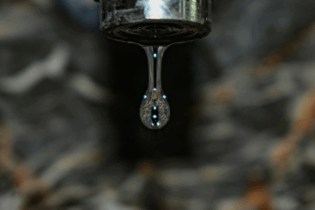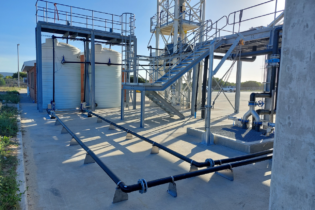As South Africa celebrates National Science Week from 29 July to 2 August 2013 a newly published Water Research Commission (WRC) study highlights the history and status of freshwater science in South Africa and documents the sector’s remarkable journey over the past 100 years, but also reveals serious threats to the endurance of science in this domain, and to the continued impact towards the sustainable development and management of the country’s water resources.
The effective management of South Africa’s water resources requires an informed and reliable scientific foundation to provide appropriate evidence-based information to guide decision-making. Research in the aquatic science domains provide us with the necessary foundation of enquiry to ensure that the country’s water resources are managed sustainably. South Africa also has a proud history of research in aquatic sciences that can be traced back to the start of the twentieth century and that has contributed to the wealth of decision-support systems required for sustainable management interventions. A WRC-funded study records the evolution of aquatic sciences in South Africa since 1900, identifying the external driving forces that helped to direct research, pinpoints the individuals and institutions responsible for shaping the ways in which aquatic sciences developed, and determines the extent to which aquatic sciences have contributed to effective management of South Africa’s water resources. The report, The freshwater science landscape in South Africa, 1900-2010, provides a broad overview of the evolution of South African aquatic science from its early years up to the present day, and focuses specifically on inland surface waters. The study was led by Dr Peter Ashton of the Council for Scientific and Industrial Research (CSIR) and Dr Dirk Roux of South African National Parks, with inputs from a host of the country’s top aquatic scientists. The report highlights the difficulties of finding a job in this field. Despite a relatively large number of trained aquatic scientists, few find employment that offers true research opportunities. Simply put, the South African aquatic science sector is in danger of drying up. The report also illustrates how, in the early 1900s, the primary focus of aquatic science was directed at taxonomic work as investigators sought to identify and classify the variety of new organisms they encountered. From that time South African aquatic science slowly developed to its present form where the hydrological and biophysical characteristics of inland waters have to be integrated with the social, economic and political issues related to its use. Only a handful of aquatic researchers (mostly trained overseas) practiced their trade in South Africa between 1900 and 1945. These men and women were pioneers and innovators, finding ways and means to conduct their research with very little support in terms of instrumentation, facilities and finances. The one resource that these scientists had was time, as well as almost complete freedom to carry out research on topics of their own choice. The middle years, 1946 to 1979, brought organisational structure to the scientific enterprise in South Africa, with the newly established CSIR playing a pivotal role in this regard. Related developments include the establishment of the Limnological Society of Southern Africa (1963), Institute for Freshwater Studies (1964), JLB Smith Institute of Ichthyology (1968), WRC (1971) and the Department of Water Affairs Hydrological Research Institute (1972). Important research programmes were started during this era, notably the National Programme for Environmental Sciences in 1972 and the Cooperative Scientific Programmes (CSPs) in 1975. The Water Act (1956) and the publication of the very influential report by the Commission of Enquiry into Water Matters (1970) provide national direction to this day. A growing appreciation for the inherent connectedness of biophysical systems catalysed a global initiative, the International Biological Programme, to coordinate large-scale ecological and environmental studies. South Africa responded to this international movement by establishing the National Programme for Environmental Sciences (NPES). This was a very significant event in the chronology of aquatic science because it provided, for the first time, a national vision that was to become a rallying point around which researchers could build learning relationships. The era of the national programmes was also characterised by collaboration across the country while individual researchers and groups were encouraged to become internationally competitive. Administrators gave considerable attention and support to profiling researchers and research conducted under the banner of the NPES, which helped to build the capacity and confidence of scientists. The period of the Cooperative Scientific Programmes (CSPs), which followed on from the NPES, also stands out as a period of relatively high cohesion among aquatic scientists in the country. The depth and breadth of scientific research that resulted from these programmes is unequalled up to today. A number of field stations were established around the country, which provided excellent facilities for academic supervisors to take students into the field and expose them to the realities of specific aquatic systems. These practical extensions of the lecture hall made a significant difference in the training and enthusiasm of students and provided the fuel for passion and getting students ‘hooked’ on a career in science.External pressures, such as the drive to commercialise research and international isolation, together with the internal demise of the CSPs, had a profound effect on the course of aquatic science in South Africa after 1980. In a sense, the 1980s spelled the end of what many consider to have been the ‘golden era’ of aquatic research in South Africa, and it would take some time for a new order to emerge.
The transitional period is characterised by a number of post-CSP trends, including reduced fieldwork which is now seen as a ‘nice to have’. Due to the high cost of fieldwork this trend has persisted, and today, studies are designed to require less fieldwork and focus more on desktop work. Lastly, it appears that support for careful, time-consuming PhD-level research has diminished after the CSP years, and contract research has risen as an alternative. Many scientists have become consultants to put bread on the table and to remain in the sector. A positive memory of this period is the strong sense of cohesion among aquatic scientists across organisational boundaries as well as a synergistic relationship between aquatic scientists and a highly competent and motivated group of water resource managers (mostly engineers) from the Department of Water Affairs (DWA). A second positive note is the important role that the WRC plays in facilitating knowledge production, sharing and management in the water sector. “The Commission was the life raft to aquatic sciences following the demise of the CSPs, and it has continued to be a lifeline to research in the aquatic field, not only by contributing the necessary funds for research but creating cohesion in the sector through its research review and reporting processes,” notes co-author, Dr Dirk Roux. In the years after South Africa’s first democratic elections comprehensive revision of the country’s water legislation dominated the aquatic science scene, culminating in the National Water Act of 1998. Pervasive restructuring characterised the institutional landscape during this era. From the middle-1990s, the River Health Programme enabled the collection of data that showed, through State-of-River reports, the relatively poor state and ecological integrity of many South African river systems. This undesirable state of affairs was confirmed when South Africa’s first National Spatial Biodiversity Assessment, conducted in 2004, found that the country’s river systems are more threatened than terrestrial or marine ecosystems. Aquatic science then found itself operating within a much more rigid set of hierarchical structures and bureaucratic management approaches. These changes resulted in more administrative responsibilities and a need to account over an ever-shrinking timeframe (e.g. more regular progress reports). According to Dr Roux, the project team was concerned to see how tied up people have become with existing commitments and responsibilities, especially senior aquatic scientists who now hold managerial positions. “While we found aquatic scientists in general more than keen to share their memories and experiences for this report, many could simply not find the time to do so. In such a crowded work life, the question must be asked around how much space is left for reflection, creativity and originality?” The importance of institutional stability in order to build that ‘bank’ of knowledge to deal with water challenges was another important factor revealed in the study. This principle applies to research centres and government departments alike. Several units and directorates that used to be rich breeding grounds for aquatic science no longer exist or seem to have lost the ability to fulfil this function. Ashton and Roux further emphasise the fact that eroded institutional memory caused by the loss of experienced staff has weakened the national capacity to use all the information that has been so proudly produced. “But all is not lost for aquatic science in South Africa”, says Dr Stanley Liphadzi, WRC Executive Manager for Water–Linked Ecosystems. “We are happy that the report concludes with a number of recommendations to strengthen the sector and its impact going forward. These recommendations range from needs in the basic education system and the job market, to the essence of functional monitoring programmes and a national vision to guide the development and deployment of aquatic science in South Africa”. An exciting and challenging time lies ahead for South Africa’s aquatic scientists as the country continues to grapple with a myriad of water challenges. Aquatic scientists will increasingly be called upon to address societal needs related to their fields of expertise and they must be ready to contribute in this regard, the report points out. “Aquatic scientists will be required to move beyond the ‘traditional’ simple production of a set of results, and instead make sure that their results can be turned into solutions that will help to solve a particular problem experienced by society.”






